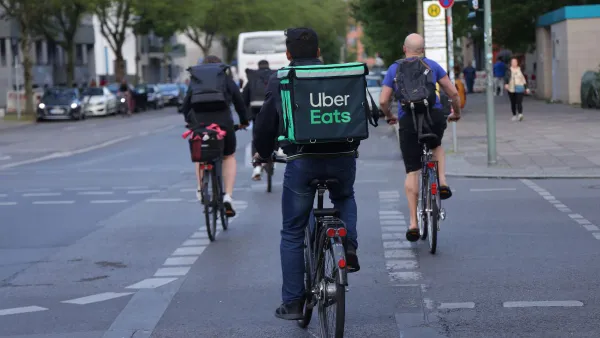Dive Brief:
- DoorDash has raised $600 million in funding this week, increasing the food delivery company’s valuation to $12.6 billion, according to a company blog post. This estimated valuation is higher than Domino’s Pizza, the ninth largest chain by sales in the U.S., according to the Wall Street Journal.
- DoorDash reports that its business has grown more than 60% earlier this year while it also continued its geographic expansion to more than 4,000 cities across the U.S. and Canada.
- The company is on a fundraising roll, securing $400 million in February, following a $250 million round in August 2018 and a $535 million round in March 2018 that valued DoorDash at $1.4 billion, according to the Journal.
Dive Insight:
There’s a good reason investors are turned onto DoorDash. The company has grown 280% year-on-year and has pulled in exclusive partnerships from the likes of Chipotle, Denny’s and Wingstop.
DoorDash’s announcement comes about a week after Amazon led a $575 million investment round into Deliveroo, reflecting that investors are salivating over the potential of the food delivery space. The segment itself has changed quite a bit in just the past few months. According to Edison Trends, DoorDash recently surpassed Grubhub and Uber Eats to garner the largest market share of consumer spend in the U.S. space.
Uber Eats still leads the market in food orders over DoorDash — 30% to 26% — but DoorDash CFO Prabir Adarkar told the Journal that he expects his company to take over. There are few reasons to doubt him at this point when considering DoorDash’s strategy. While Uber and others have focused heavily on saturated urban markets (where many trends tend to start) DoorDash has focused on growing in suburbs. This allows the company to reach an entirely different, newer audience that relies just as heavily on convenience.
Still, despite all the money being thrown toward food delivery, a few red flags remain. For starters, profitability is rare — Grubhub is profitable and that’s about it. Grubhub is losing market share, but is favorably positioned with a focus within just the restaurant space. Conversely, DoorDash and Postmates are also heavily active in the grocery space, while Uber splits its focus with its ride-share business.
If DoorDash can figure out the profitability piece, it will have an even bigger advantage than its recent funding rounds and growing market share. Perhaps this new round of funding can help gain traction here. However, according to TechCrunch, the company has yet to disclose revenues, so right now it’s hard to tell what metrics to use for any such guidance.
It’s also important to note that while investors may be turned onto such companies and consumers are demanding services from them, that doesn’t mean it’s smooth sailing ahead. More restaurant operators are growing weary of the large commission fees these companies charge and they’re starting to push back a little and even explore in-house delivery. As The Motley Fool analyzed earlier this week, restaurant operators are growing skeptical of the economics behind food delivery. If delivery companies lose leverage with restaurants, their business model is moot, and no round of funding can fix that.













